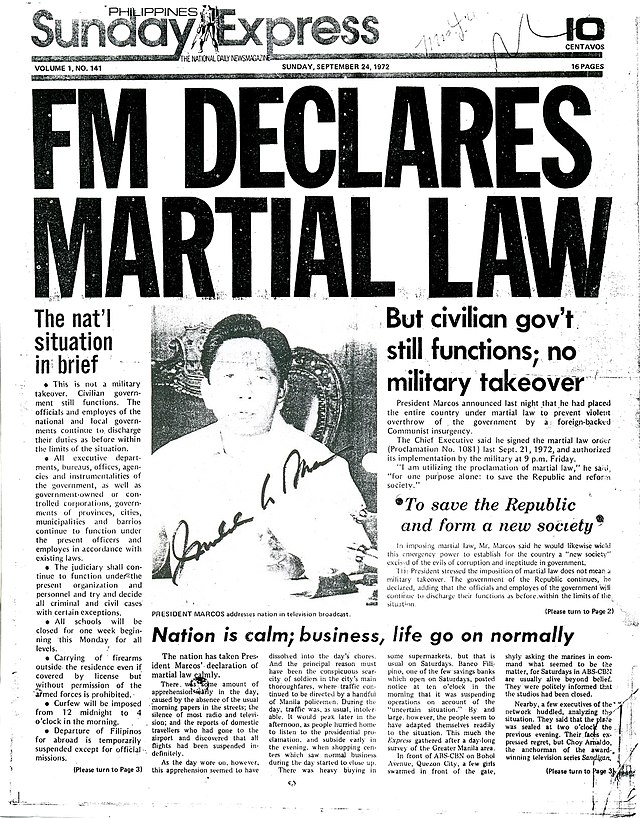9 Simple Techniques For News Articles
9 Simple Techniques For News Articles
Blog Article
Little Known Questions About News Articles.
Table of ContentsRumored Buzz on News ArticlesThe News Articles IdeasThe smart Trick of News Articles That Nobody is Talking AboutThe 20-Second Trick For News ArticlesNews Articles - An Overview
Good knowledge of various subjects offers trainees a competitive side over their peers. Even though electronic and social media are conveniently obtainable, we need to not neglect just how vital it is to review the newspapers. Parents should attempt and inculcate the routine of reading a paper as a daily regimen to proceed the legacy of the adored print tool.News stories also have at least one of the following crucial characteristics relative to the designated target market: distance, prestige, timeliness, human rate of interest, anomaly, or repercussion.
Within these limitations, news tales likewise aim to be comprehensive. However, other factors are involved, some stylistic and some stemmed from the media type. Amongst the bigger and much more respected newspapers, fairness and equilibrium is a significant aspect in providing details. Commentary is generally constrained to a separate section, though each paper may have a various general slant.
Newspapers with a worldwide target market, as an example, tend to make use of a much more formal design of creating. The details selections made by an information electrical outlet's editor or content board are usually collected in a design overview; common design guides include the and the US Information Style Book. The major objectives of news writing can be summarized by the ABCs of journalism: accuracy, brevity, and quality.
The Facts About News Articles Revealed
As a policy, journalists will certainly not utilize a lengthy word when a brief one will do. They use subject-verb-object building and vivid, active prose (see Grammar). They provide anecdotes, examples and metaphors, and they hardly ever depend on generalizations or abstract ideas. News authors attempt to prevent utilizing the very same word a lot more than when in a paragraph (in some cases called an "resemble" or "word mirror").
Headings often omit the topic (e.g., "Leaps From Watercraft, Catches in Wheel") or verb (e.g., "Pet cat lady lucky"). A subhead (likewise subhed, sub-headline, subheading, caption, deck or dek) can be either a subordinate title under the main heading, or the heading of a subsection of the short article. It is a heading that precedes the major text, or a team of paragraphs of the main message.

of a write-up topic, informant, or interviewee), it is described as a pulled quote or draw quote. Extra signboards of any of these kinds might Click This Link appear later on in the post (especially on subsequent web pages) to attract more analysis. Journalistic sites in some cases utilize computer animation strategies to switch one signboard for one more (e.g.
The 8-Second Trick For News Articles
Such signboards are additionally utilized as reminders to the write-up in various other areas of the magazine or site, or as promotions for the piece in other magazine or websites. News release of the Swiss government. Common structure with title, lead paragraph (summary in bold), other paragraphs (details) and call info.

Example of a hard-lead paragraph NASA is suggesting one more area project. The budget demands around $10 billion for the job.
The NASA announcement came as the firm requested $10 billion of appropriations for the job. An "off-lead" is the second crucial front page information of the day. The off-lead shows up either in the leading left corner, or directly listed below the lead on the right. To "hide the lead" is to start the write-up with background details or information of second significance to the readers, requiring them to learn more deeply into an article than they ought to need to in order to uncover the necessary factors.
Examine This Report on News Articles
Typical usage is that or two sentences each create their own paragraph. Journalists normally describe the company or structure of a newspaper article as an upside down pyramid. The important and that site most fascinating elements of a tale are put at the beginning, with supporting information complying with in order of reducing relevance.
It enables individuals to discover a subject to only the depth that their interest takes them, and without the charge of information or subtleties that they might take into consideration unnecessary, yet still making that details offered to much more interested visitors. The inverted pyramid structure likewise allows write-ups to be trimmed to any approximate size during design, to suit the area offered.
Some writers begin their tales with the "1-2-3 lead", yet there are lots of kinds of lead available. A kicker can refer to several things: The last tale in the news program; a "happy" story to finish the show.
Longer posts, such as magazine cover posts and the items that lead the within areas of a newspaper, are known as. Feature tales differ from straight information in a number of ways. Foremost is the lack of a straight-news lead, a lot of the moment. Rather than providing the essence of a tale up front, feature authors may attempt to draw viewers in.
Fascination About News Articles
The journalist commonly details interactions with meeting topics, making the piece more individual. A feature's very first paragraphs frequently connect a fascinating moment click here to read or occasion, as in an "anecdotal lead". From the particulars of an individual or episode, its view rapidly widens to generalities concerning the tale's topic. The area that indicates what a function has to do with is called the or signboard.

The Editor's Tool kit: A Referral Guide for Beginners and Professionals (2001) Allan M. Siegal and William G. Connolly. The New York Times Handbook of Design and Use: The Authorities Design Guide Utilized by the Writers and Editors of the Globe's Many Reliable Paper (2002) M. L. Stein, Susan Paterno, and R.
Report this page